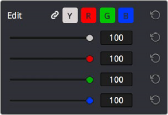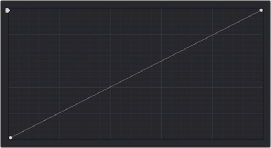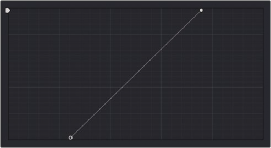
< Previous | Contents | Next >
The neutral diagonal position of the curve at which no adjustment is made
The horizontal axis represents the range of image tonality in the original image, from black (at the left) to white (at the right), while the vertical axis represents the range of alteration you can make.
By adding control points to the surface of the curve and raising or lowering it at different regions, you are actually remapping the original horizontal “input” value of a color channel to an “output” value of your choosing.

Additional controls appear to the right of the curve editor itself. A top row of buttons let you select the curve corresponding to an individual color channel for isolated adjustment, while a vertical stack of four sliders let you adjust the intensity of each color channel’s curve.
The channel-editing buttons and curve intensity sliders appear to the
right of the curve editor
Editing the Top and Bottom Control Points of Curves
![]()
You can also edit curves using the default two control points that the curve control starts out with in the Curve Editor. The Black Point control (at the lower-left) and the White Point control (at the upper- right) let you expand and compress the video signal similarly to using the Lift and Gain Master Wheel controls in the Color Wheels palette.


The Curve control at its original state The Black and White Point controls dragged
to the right and left to expand the signal